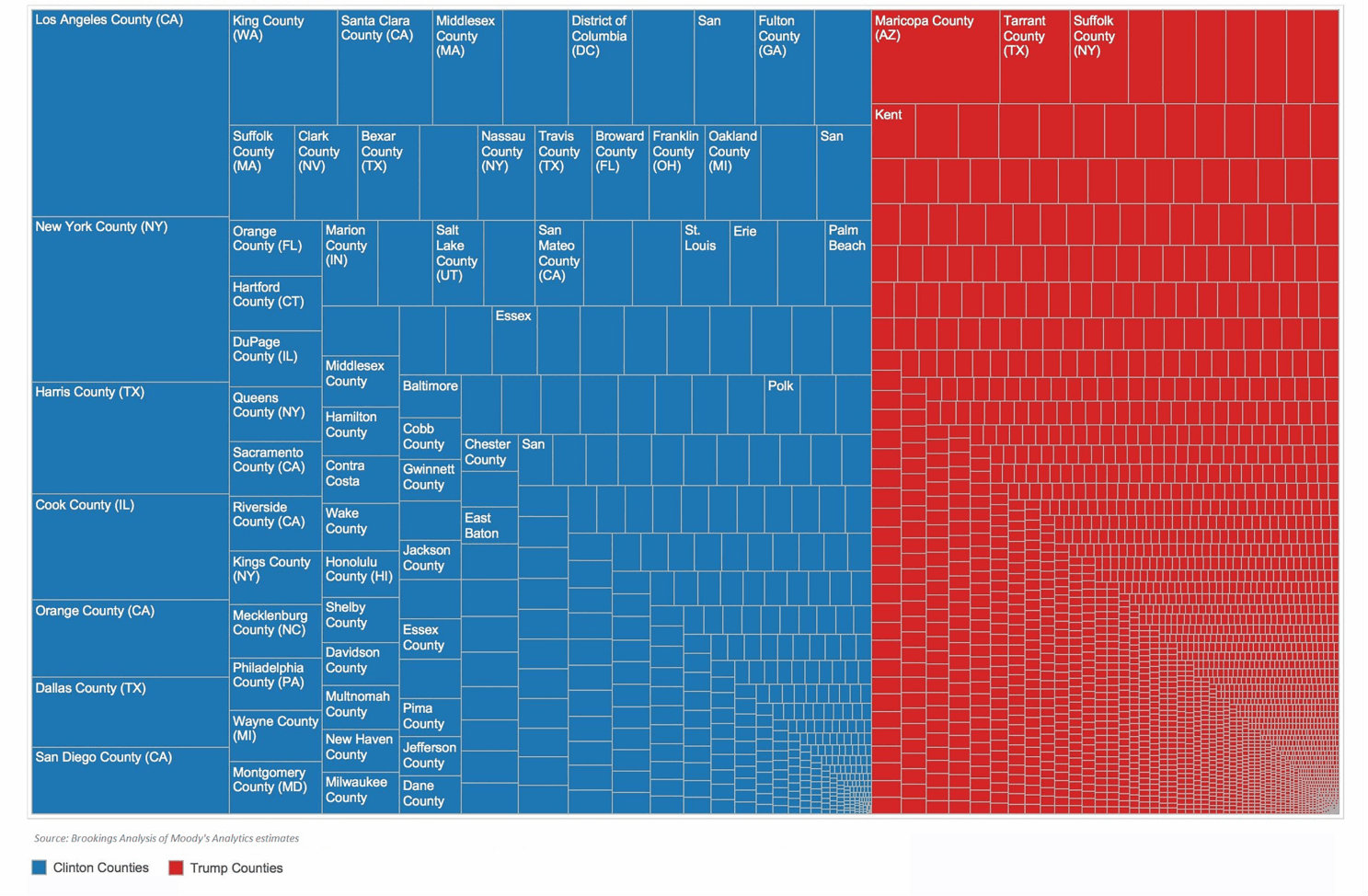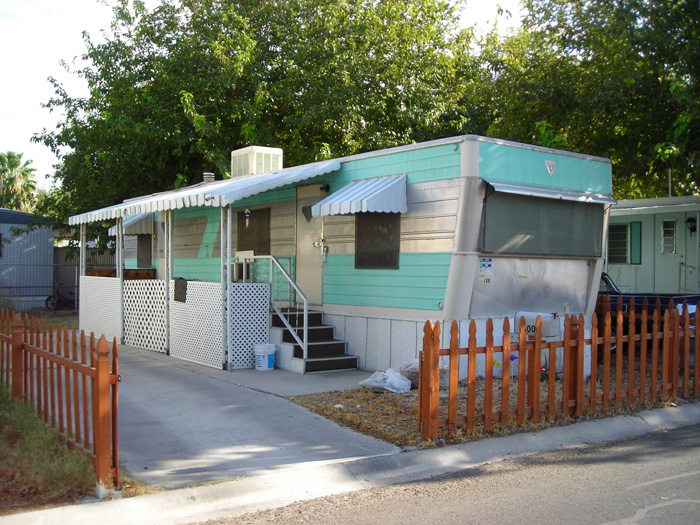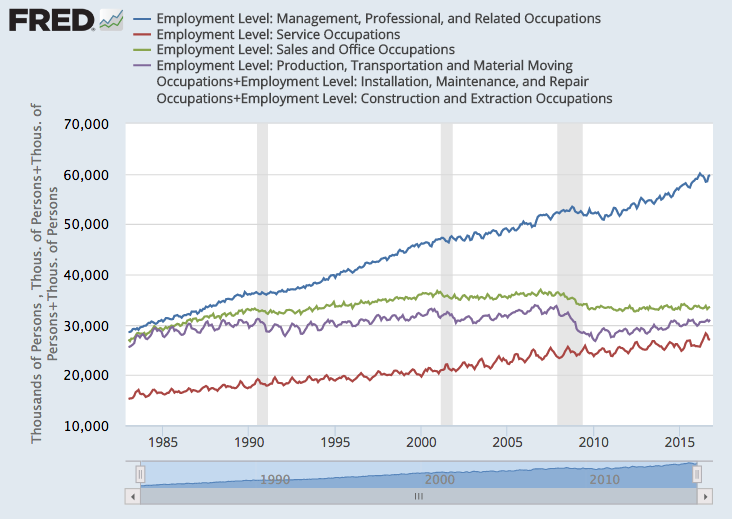The Difference Between the Economic Output of Clinton and Trump Voters

By:
The surprising outcome of the presidential election has shined a light on America’s divisions, from race to education.
However, one striking difference between supporters of President-elect Donald Trump and of Hillary Clinton deserves more attention: the economic output of where they live.
According to a new analysis by the Brookings Institution, the economic split is staggering. In a blog post, Mark Muro and Sifan Liu of the nonprofit public policy organization write:
The less-than-500 counties that Hillary Clinton carried nationwide encompassed a massive 64 percent of America’s economic activity as measured by total output in 2015. By contrast, the more-than-2,600 counties that Donald Trump won generated just 36 percent of the country’s output—just a little more than one-third of the nation’s economic activity.
To place that within a geographic context, Clinton’s voter base was “heavily metropolitan,” while Trump’s was made up of “tiny low-output locations that comprise the non-metropolitan hinterland of America,” as well as suburban and exurban areas, the authors noted. They also provided a visualization of the data they explored, which illustrated the share of 2015 real GDP by county.
Blue counties voted for Clinton, red counties voted for Trump.
 Brookings Institution - brookings.edu
Brookings Institution - brookings.edu
The data used, which explores each counties share of GDP rather than GDP per capita, is more suggestive than descriptive, since it leaves out how many people are in each county, according to David Just, a professor of behavioral economics at Cornell University. This means that some of the smaller areas might have a high per capita GDP, despite not contributing much to the country's overall GDP.
However, overall, Just believes the data paints an accurate portrait of America's economic and political divide.
"Essentially, the argument they're making is that Trump counties were left behind in the economic recovery and have been systematically producing less overall," Just told ATTN: in an interview. "There are two economies out there — one that the recovery has worked for and has responded to the economic incentives out there with jobs and money to go around and one where this economy didn’t work for them and [in which] they are not well situated to take advantages of opportunities."
 Roadsidepictures / Flickr - flickr.com
Roadsidepictures / Flickr - flickr.com
According to Just, the analysis confirms a popular post-election narrative regarding what drove Trump supporters to vote for him. "There’s a message here that should strike across party lines," said Just. "There’s a concern to be addressed that may incidentally have something to do with race and social issues, but the core issue is economic."
Trump has made addressing these economic concerns, at least superficially, a major part of his post-election strategy.
This week, President-elect Donald Trump and Vice President-elect Mike Pence secured a deal with appliance manufacturer Carrier to stop the planned outsourcing of 1,000 Indiana-based jobs. As Danielle Kurtzleben at NPR writes, the Trump/Pence deal isn't a long-term solution to the loss of American manufacturing jobs.
This is a tiny symbolic gesture — 1,000 jobs is less than 0.01 percent of the manufacturing jobs in the U.S. Moreover, the country still has about 1.5 million fewer manufacturing jobs than it did prior to the recession. Trump faces a reality that journalists have pointed out over and over, both during this campaign and during the earlier years of the Obama presidency: manufacturing jobs aren't coming back, at least not to anywhere near their prior highs.
In a chart published earlier this year, the Federal Reserve Bank of St. Louis depicted the difference in the levels of employment for various job categories, which are further labeled based on whether they are "routine" or "cognitive."
As you can see, the "two economies" Just described are represented.
 FRED - stlouisfed.org
FRED - stlouisfed.org
As Kurtzleben points out, there’s high growth in high-skilled, professional jobs, which are labeled as "nonroutine cognitive.” This means they aren’t repetitive and require high cognitive skills and training, such as surgeons and architects, reports Kurtzleben.
In contrast, growth in routine jobs (both cognitive and non-cognitive) such as sales, secretarial, and manufacturing jobs, is stagnant. Kurtzleben also observes service occupations, such as those in hospitality and restaurants, are also growing, because, like the professional occupations, they can't be outsourced.
In regards to the election, Jed Kolko of FiveThirtyEight noted that Trump performed the best in counties with the most “routine” jobs, which are threatened by the possibility of outsourcing and automation. While acknowledging the complexity of the relationship between economic anxiety and support for Trump, as well as how demographic factors play a role, Kolko concludes, "[I]t is clear that the places that voted for Trump are under greater economic stress, and the places that swung most toward Trump are those where jobs are most under threat."
